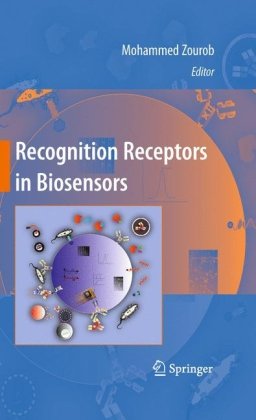

Most ebook files are in PDF format, so you can easily read them using various software such as Foxit Reader or directly on the Google Chrome browser.
Some ebook files are released by publishers in other formats such as .awz, .mobi, .epub, .fb2, etc. You may need to install specific software to read these formats on mobile/PC, such as Calibre.
Please read the tutorial at this link: https://ebookbell.com/faq
We offer FREE conversion to the popular formats you request; however, this may take some time. Therefore, right after payment, please email us, and we will try to provide the service as quickly as possible.
For some exceptional file formats or broken links (if any), please refrain from opening any disputes. Instead, email us first, and we will try to assist within a maximum of 6 hours.
EbookBell Team

4.4
32 reviewsThis book presents a significant and up-to-date review of various recognition receptors, their immobilization, and an overview of surface characterization techniques. Distinguished scientists from key institutions worldwide have contributed chapters that provide a deep analysis of their particular subjects; at the same time, each topic is framed within the context of this integrated approach. This work explores comprehensively the field of recognition receptors, presenting a thorough review of the subject and effective integration of these receptors on sensor surfaces in order to appropriately convey state-of the-art fundamentals and applications of the most innovative approaches.
The book consists of four parts:
The first part comprises three chapters, which are devoted to the introduction of biomolecular recognition, surface sensitization and recognition receptors immobilization, as well as containing an overview of the analytical tools that can be used for surface characterization.
The second part describes the different natural recognition receptors (enzymes, antibodies, cells, tissues, plant tissues, peptides, bacteriophages and photosynthetic proteins) currently used in the field of biosensors and microarrays. It covers the theory behind each technique and delivers a detailed state-of-the-art review for each new technology.
The third part covers the recognition receptors that can be prepared and tailored by man to mimic natural molecules used in biosensors and microarrays. It describes in detail the use of engineered antibodies, carbohydrates, nucleic acids, oligonucleotides, aptamers, genetically engineered cells, genetically engineered proteins, phage display, molecularly imprinted polymers, and biomemetic materials as recognition elements.
The fourth part contains one chapter that briefly covers the kinetics and thermodynamics of association/dissociation of analytes to the recognition receptors on sensor surfaces.
Students and researchers who need a solid foundat